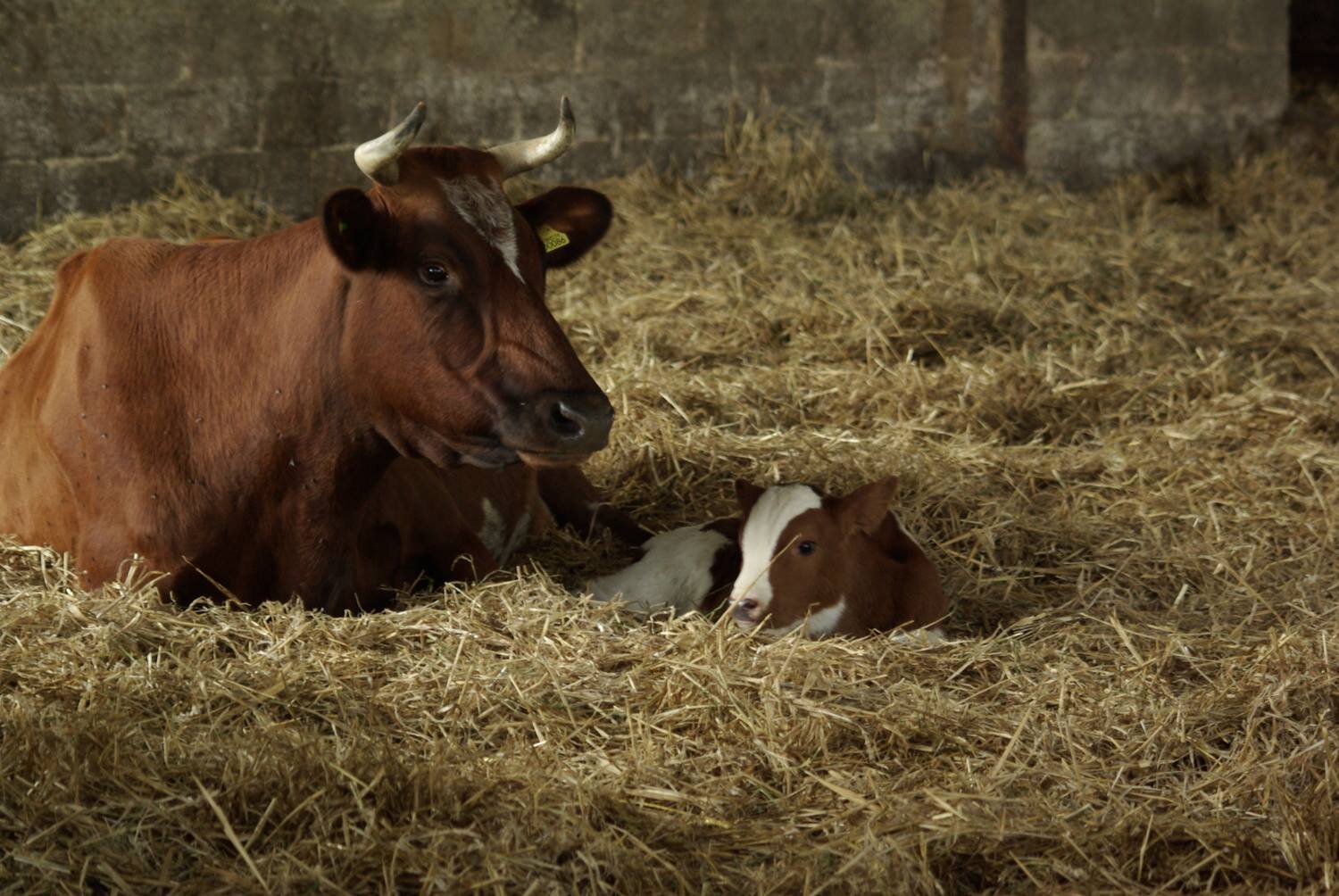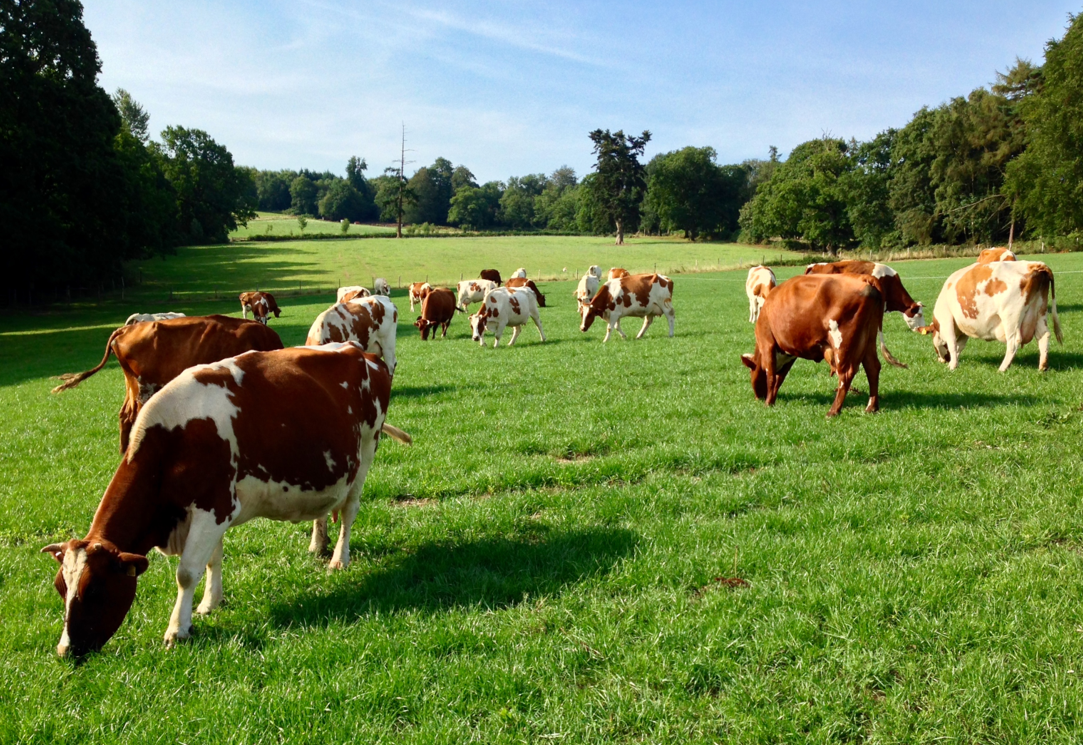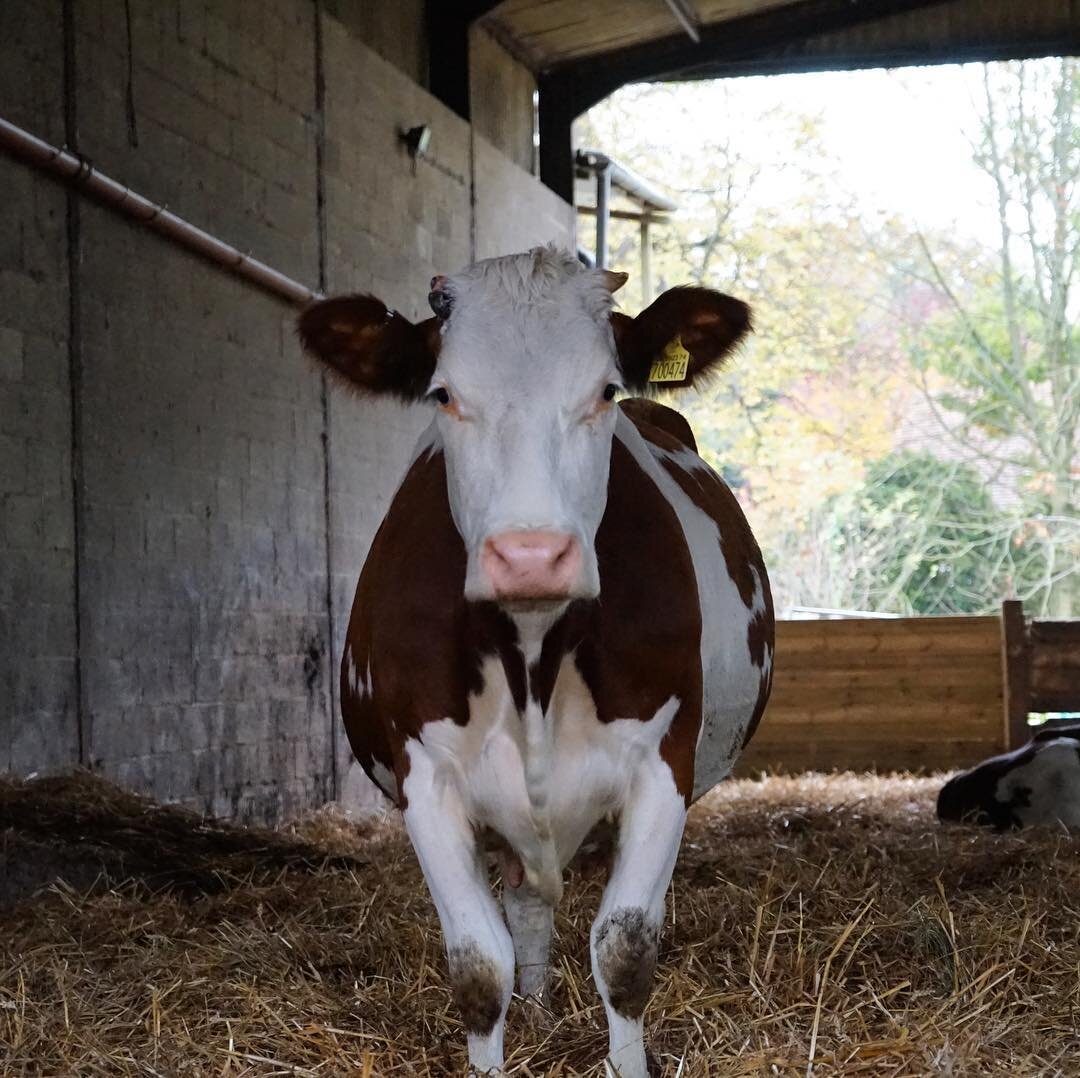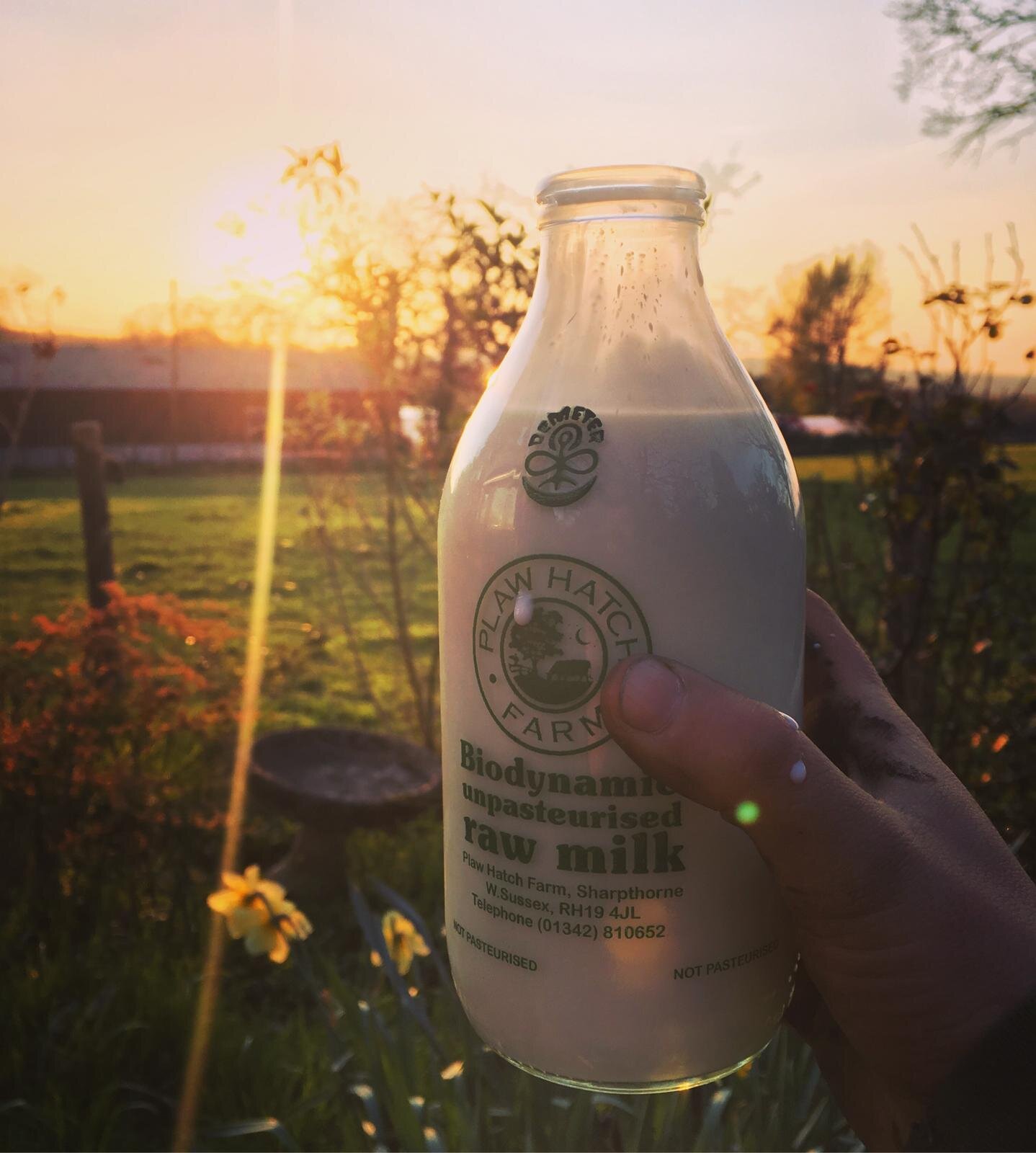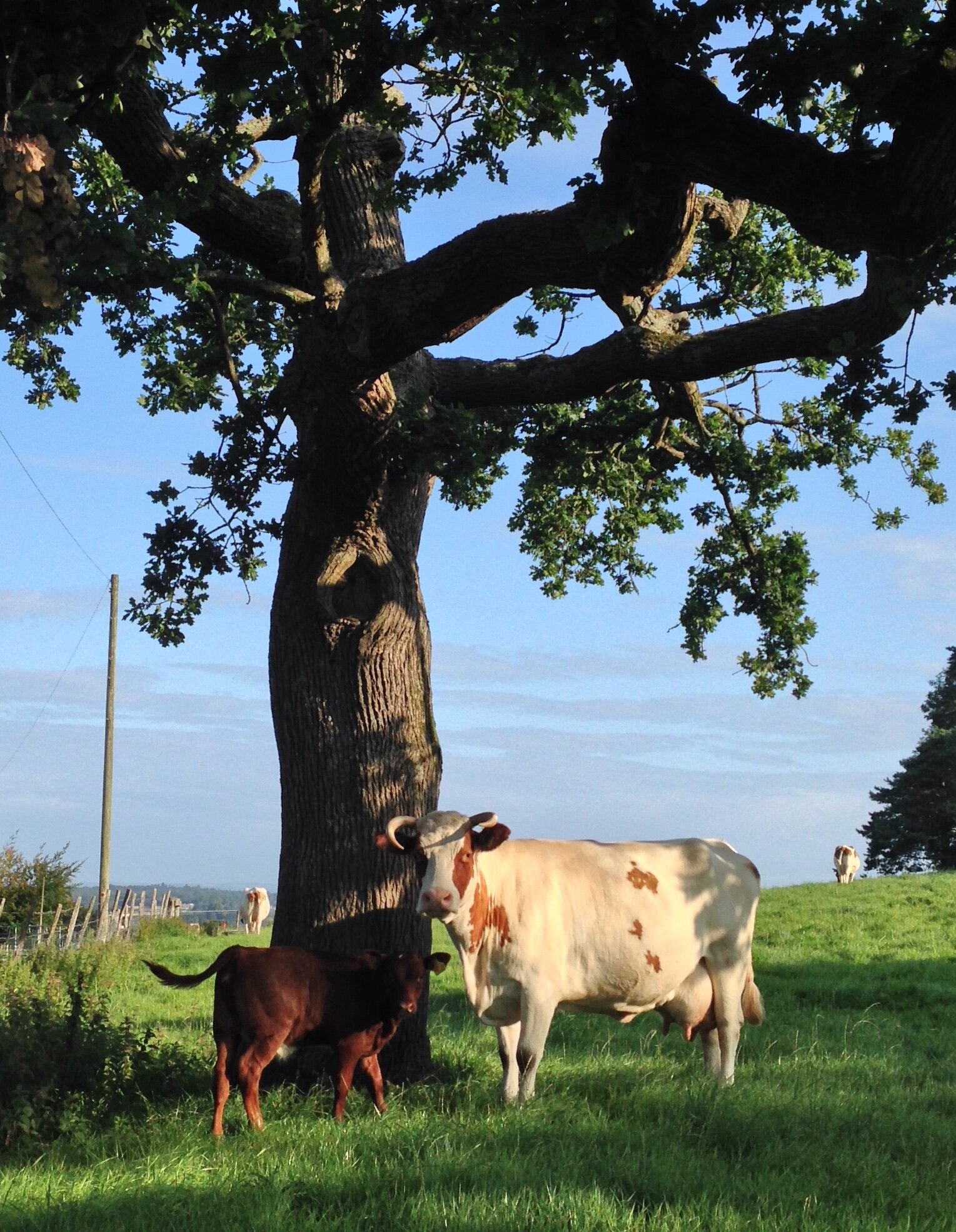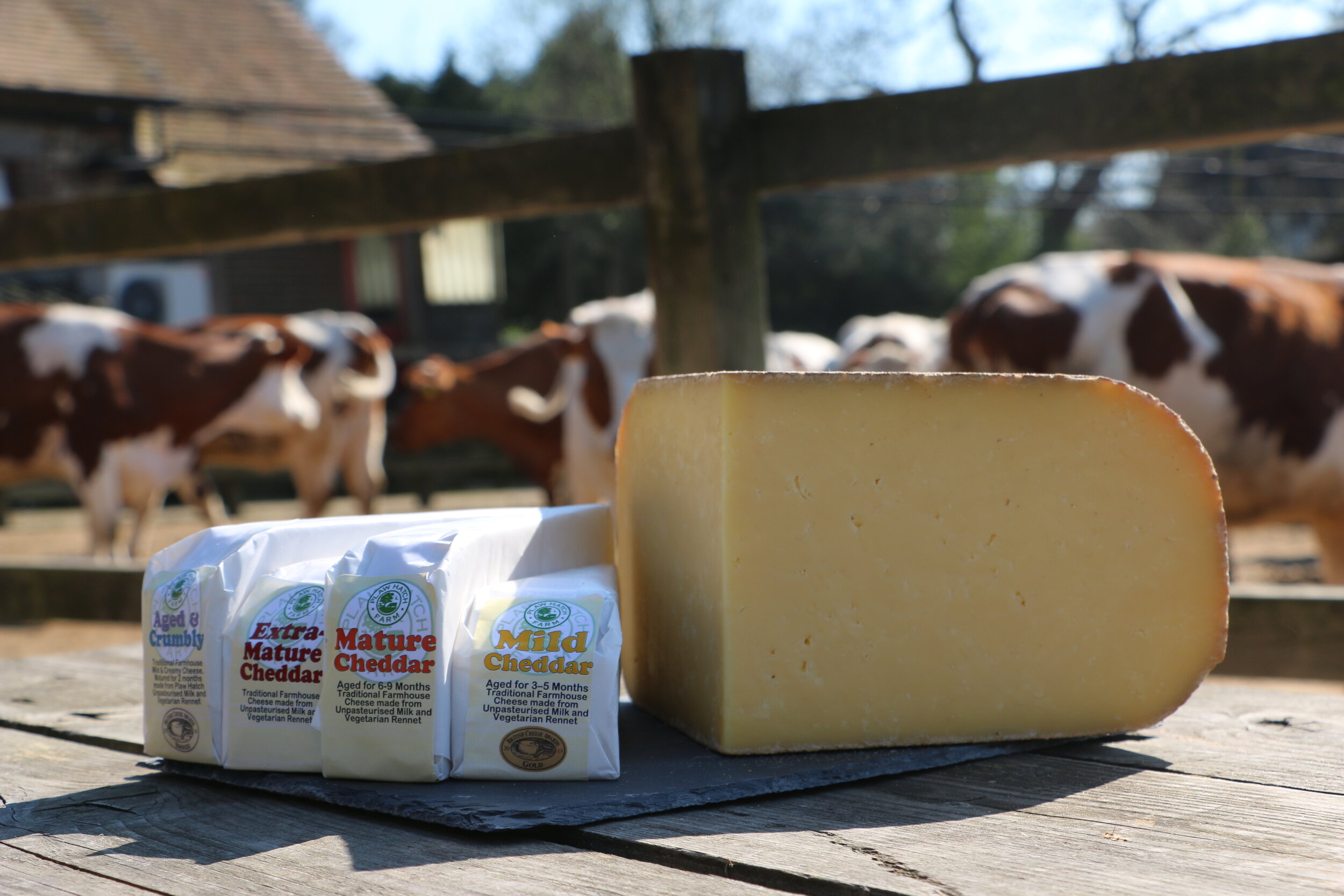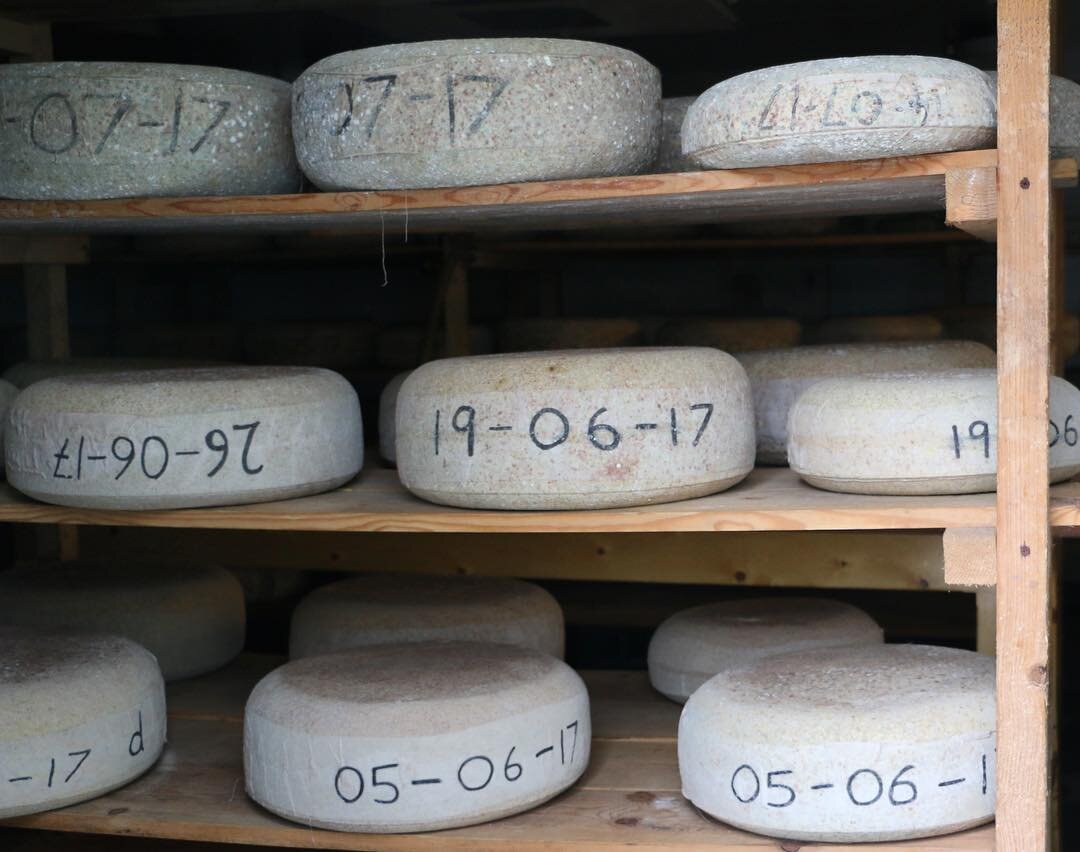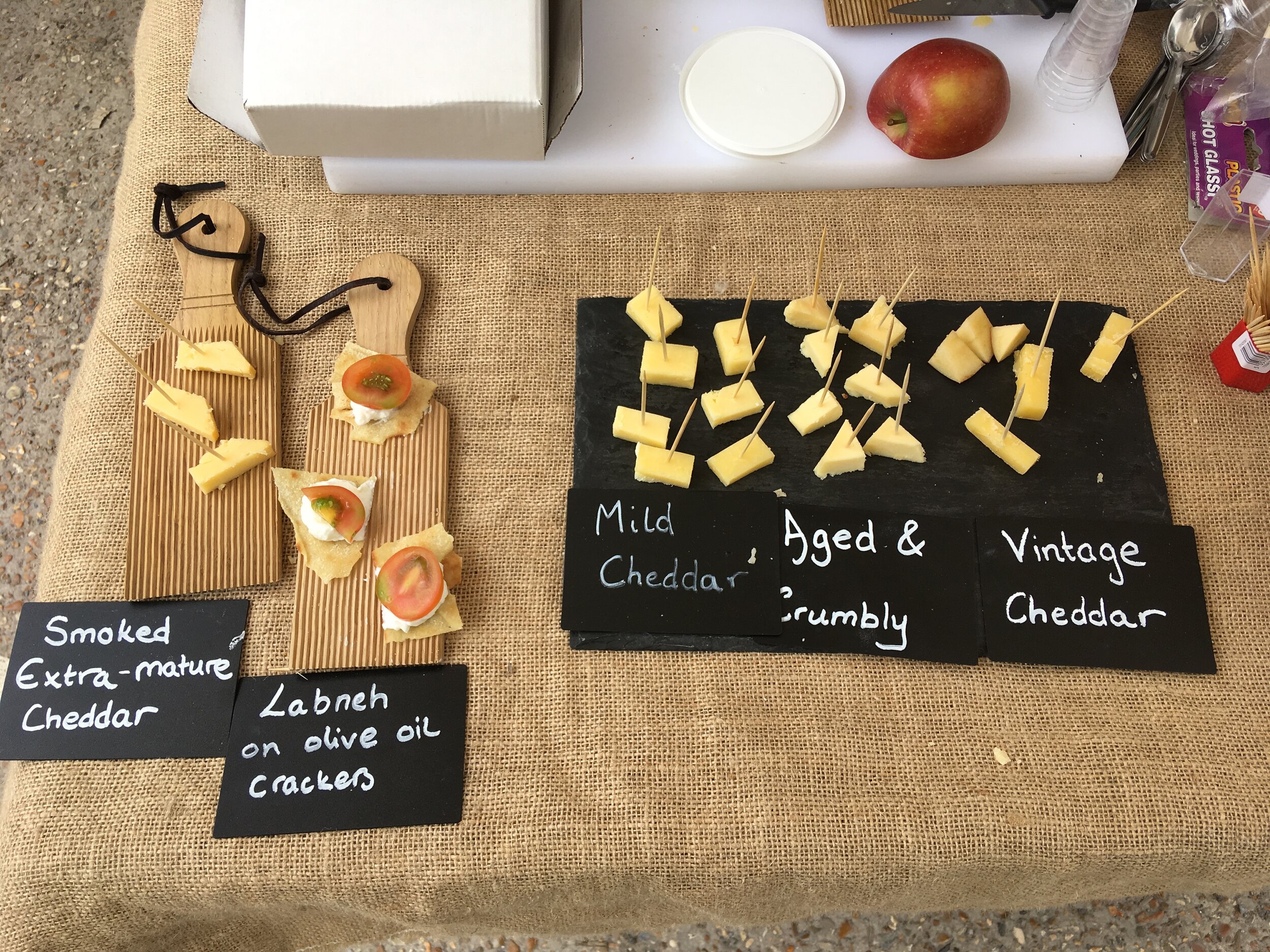
The Dairy (creamery) is very reliant on the seasons, the weather and, most importantly, on the rhythm of the cows. Two to three months before calving - early Spring, Summer and late Autumn - the cows are 'dried off' (i.e. not milked). This means that out of a small herd, a lot less milk is available for processing at certain times of the year. Our cows give us anywhere between 250-550 litres a day, depending on the time of year, the weather, what's growing in the pastures, and even their mood... During the 'flush' times we make lots of cheese (the dairying equivalent of making hay while the sun shines). The taste of the milk reflects the seasons, the range of plants in the pasture/hay/silage, the soil life, even the age of the cows and where they are in their lactation. Changes in flavour are part of being part of the rhythm of the seasons and traditional farming. To learn more about our milk, visit our raw milk page.
Being biodynamic it is important for us to have cattle with horns, and strive for a self-sustaining system. For example, rather than being a waste product, the cows' manure fertilises the pastures, and the whey from cheesemaking is a valuable food for the pigs and chickens. Fundamental to our values is that we only use milk from our own herd, so we know the full history of each pint and the unique characteristics or 'terroir' come through in the flavour. This means the milk has travelled literally metres from cow to dairy to the farm shop, and customers can see the whole process. It's also important to us to preserve – and enhance where possible – the nutritional qualities of the foods we produce, with minimal processing other than fermentation and with only natural ingredients.
With the exception of our yoghurts and Sizzler, all our produce is unpasteurised. The very process of making yoghurt requires the milk to be heated and the Sizzler pieces must be cooked in their own whey. We produce fruit for our yoghurts on the farm, and freeze the summer surplus. Where we can't produce the fruit ourselves we source biodynamic and organic fruit from known local growers.
The facilities are modern in order to meet environmental health standards, but the processes are based on traditional techniques and it is very 'hands on' as the tasks are quite small and varied.
We pride ourselves on providing quite an extensive range of produce from what is arguably a very small herd.
THE CHEESE CAVE
SMALL BATCH ARTISAN CHEESE MADE BY HAND

When the cows are producing lots of milk, we make cheese. The main cheese we make is cheddar, allowing it to age in our Cheese Cave for varying amounts of time to produce mild, medium, mature, extra-mature and vintage cheese. We also make a Cypriot-style brined cheese called Sizzler, and a creamy gouda-style cheese called Dutchman.
Why age cheeses?
All cheeses start off with a very mild flavour. They might be acidic or milky-sweet depending on how they're made, but stronger and more complex flavours take time to develop. Ripening bacteria, yeasts and moulds create aromatic compounds producing a range of flavours and aromas in the body and on the surface of the cheese. Raw milk naturally contains a diversity of ripening bacteria which contributes to the complexity of flavours and are unique to the herd and their pasture.
How long is Plaw Hatch Cheddar aged?
Not all cheeses ripen at the same rate, so we taste each wheel to check whether it's ready. We don't even start tasting until 3 months old, as before that the cheese won't have developed enough flavour to be even a mild cheddar. Our oldest wheels are 2 years old and are classed as vintage.
What is involved in the ageing process?
Although the microbes do much of the work creating the flavour, we need to maintain the environment for them to grow. As with a lot of dairy work, in the ageing process we are bacteria farming. The cheese store needs to be kept cool (10°C), relatively dark and very humid, but not wet, around the surfaces of the cheeses. Cheesemakers used to age their cheeses in caves, and our cheese store mimics that environment. Each wheel is bandaged with cheesecloth and melted butter after it's made to slow moisture loss and protect the rind. Every week we turn each and every wheel of cheese so that they dry evenly and develop a good rind, we also hoover each wheel to prevent the build-up of mould. It's heavy work as our larger wheels can weigh around 25kg.

